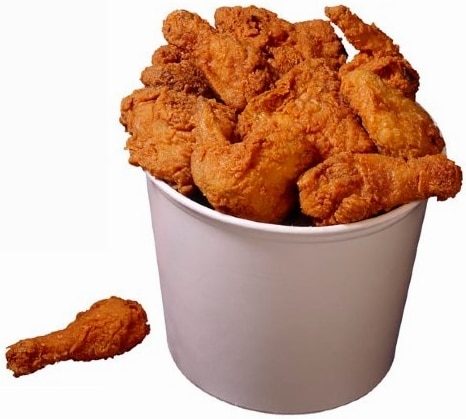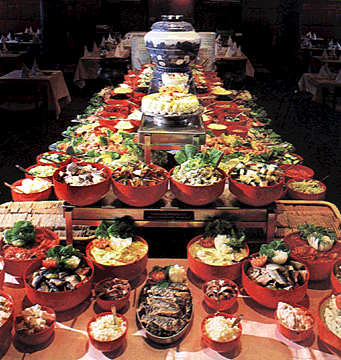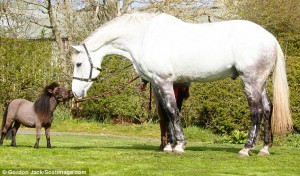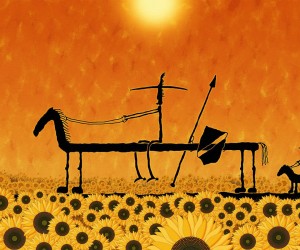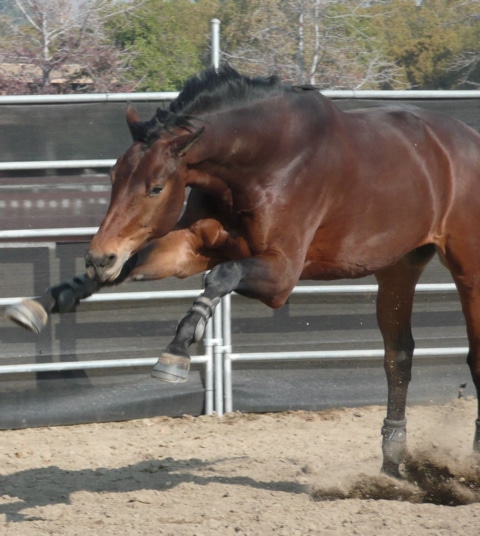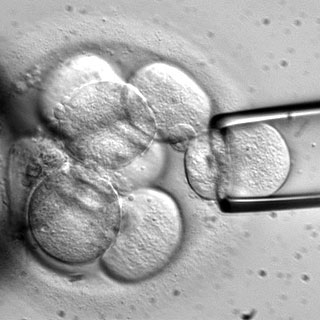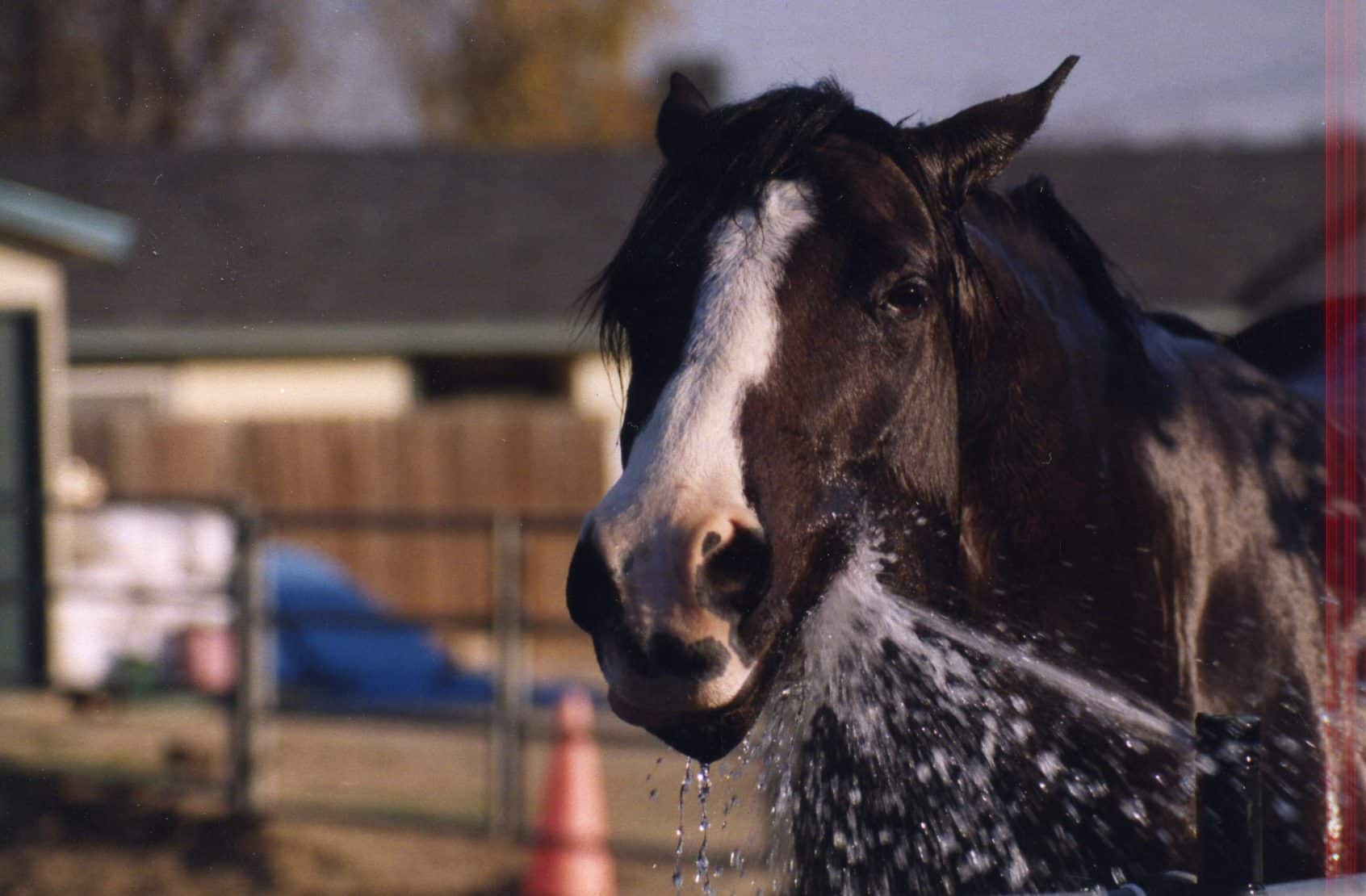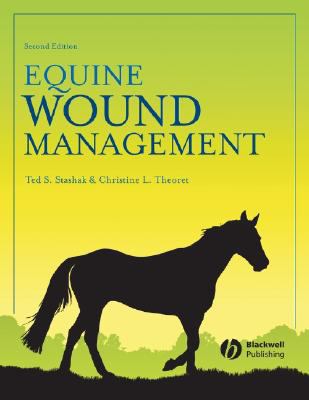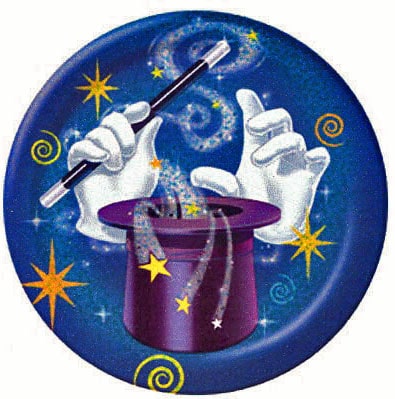I am often amused how some people insist that horses (in general) absolutely can or can’t be fed this or that. What and how horses eat – and thrive on – depends a lot on where in the world that they are. Many of the horses that I take care of live on alfalfa cubes, which is alfalfa hay that is chopped and steam pressed, and their diet is quite different than that of the horses in Botswana that I looked after in 2013 (not to mention that California horses don’t have to fend off baboons). And, mostly, horses all do great as long as they get enough decent quality forage.
I remember looking after a horse that loved oranges. You’d give him an orange, he’d toss it around in his mouth a bit, he’d take a quick chomp, and then he’d happily spray everyone within a 10 foot radius with orange juice before downing the whole thing, peel and all. Another horse that I took care off would kill for a hot dog (bun included). My point is that when you start to look at all of the things that horses get fed all over the world, maybe you can not worry quite so much about the exact amounts of this or that you’ve heard that a horse may need. Maybe you’ll even have a little fun, and share a story or two in the Facebook comments.
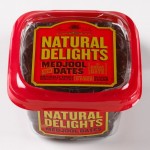 Horses in the middle East might get dates (usually without pits) as a treat. Dates run about $10 a pound in California, but being the curious sort, I thought I’d buy a few and see what horses thought of them. I just about lost my hand the first time that I fed a horse a date. Try it on your horse (carefully).
Horses in the middle East might get dates (usually without pits) as a treat. Dates run about $10 a pound in California, but being the curious sort, I thought I’d buy a few and see what horses thought of them. I just about lost my hand the first time that I fed a horse a date. Try it on your horse (carefully).
Sugarcane is, of course, one of the main sources of sugar, and just like the sugar cubes that are sometimes fed as treats in many parts of the world, horses love sugarcane, too. Whole sugarcane (minus the leaves) is ground up and fed to horses in countries that produce sugarcane, such as Columbia. The leaves don’t go to waste – they can be chopped into small pieces and fed to horses, too.
In Spain, horses may be fed day-old bread, mostly as a treat. I’d use day old break to make stuffing, or bread pudding, but that’s just me. CLICK HERE for a good bread pudding recipe.
 The Netherlands is a country that grows and eats a lot of potatoes. It has one of the higher per capita consumption of potatoes in the world, well behind Ireland or Krygystan (really) but well ahead of many other countries, including the US. (CLICK HERE to see estimates of the potato consumption of various countries in the world, and read up in case you’re invited to a trivia contest). Anyway, when there is a bumper crop of potatoes, horses get to eat some of them. Dutch horses may also get to eat turnips (NOTE: I don’t have a good turnip recipe, so please don’t ask), as well as the big winter carrots that are grown there.
The Netherlands is a country that grows and eats a lot of potatoes. It has one of the higher per capita consumption of potatoes in the world, well behind Ireland or Krygystan (really) but well ahead of many other countries, including the US. (CLICK HERE to see estimates of the potato consumption of various countries in the world, and read up in case you’re invited to a trivia contest). Anyway, when there is a bumper crop of potatoes, horses get to eat some of them. Dutch horses may also get to eat turnips (NOTE: I don’t have a good turnip recipe, so please don’t ask), as well as the big winter carrots that are grown there.
In England, you can by horse feed that’s been flavored (flavoured?) with ground up mint leaves. Presumably, these are leaves that are left over after making mint jelly, which is a must in some households to serve with the omnipresent lamb dishes.
Vincent O’Brien was probably the most famous, and certainly one of the greatest, horse trainers that Ireland has ever had (CLICK HERE to read about him). When I was a veterinary student, I got a chance to see his training facility in south Central Ireland, which is also where I was introduced to my first (and second, and third, and fourth…) pint of Guiness. In O’Brien’s stable, the consumption of Guiness was not limited to the grooms, although they certainly did their best to consume their fair share. In fact, horses in Vincent O’Brien’s stable got a liter of Guiness stout and two eggs in their daily ration (and, after all, stout is just water, yeast, and fermented grain). After my first night’s introduction, I was not about to fight a horse for his share on the next day.
Regular orange carrots are a real treat for horses in California. You can buy misshapen “horse carrots” in the grocery store for a few dollars per 25 pound bag. But in England and South Africa, carrots can get added to a horse’s diet because they are thought to help keep horses from going off their feed.
Apparently, horses in some parts of Australia may get to eat whole sunflowers. Yes, those big yellow iconic flowers that show up repeatedly in happy farm pictures. While in the US, the consumption of sunflowers is pretty much limited to toasted sunflower seeds, in a variety of flavors – they are pretty much required at youth baseball games throughout the country – the whole sunflower plant is actually a good source of fat and fiber, and there’s some protein in them, too.
Ever run endurance horses? I used to – my horse, Clovis, was a wonderful competitor (and we jumped, and swam, and did the vet school rodeo, too). One of the challenges for endurance horses can be keeping the calories going into them while they are competing. If you’re a French endurance horse, you might even get some honey squirted into your mouth!
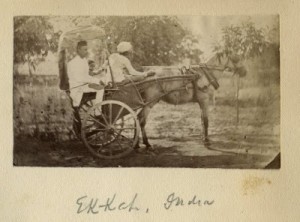 Horses in India can get a treat called jaggery. Jaggery is a “natural” sweetener made by concentrating of sugar cane juice, not unlike what’s done to maple tree sap to make maple syrup. It ‘s dark and coarse and unrefined, but it’s very popular, and makes up about 50% of the sugar eaten in India. It has a distinctive sweet winey fragrance and taste that horses love. Fat can be added to the diet of Indian horses in the form of ghee, a class of clarified butter that is often used in cooking. Indian horses can find that their grain ration gets mixed with cow’s milk, too.
Horses in India can get a treat called jaggery. Jaggery is a “natural” sweetener made by concentrating of sugar cane juice, not unlike what’s done to maple tree sap to make maple syrup. It ‘s dark and coarse and unrefined, but it’s very popular, and makes up about 50% of the sugar eaten in India. It has a distinctive sweet winey fragrance and taste that horses love. Fat can be added to the diet of Indian horses in the form of ghee, a class of clarified butter that is often used in cooking. Indian horses can find that their grain ration gets mixed with cow’s milk, too.
Coconut can be a food source for horses in Caribbean countries. Horses will happily eat coconut meat, as well as the brown fibers from inside the husk. Coconut meal is a good source of dietary protein, and coconut oil is an alternative source of dietary fat.
So, next time somebody tells you that your horse has to eat this, or absolutely cannot eat that, keep in mind that in other parts of the world, they often do. While I don’t recommend feeding hot dogs to your horse (or too many of them to you, for that matter), I think it’s really fun to look at what horses enjoy in other parts of the world. Eggs and Guiness, anyone?

